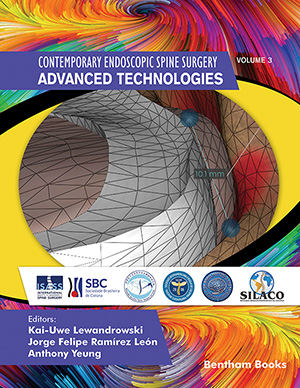Abstract
Endoscopic spinal fusion is on the horizon. Many surgeons have offered
various endoscopically assisted decompression and fusion surgeries that consist of an
interbody device and posterior supplemental screws. Stabilization of the spine via an
anterior column fusion implant has excellent advantages of improving the fusion rate
via bone graft containment. It can enhance spinal alignment and assist in direct and
indirect decompression of neural elements via restoring normal lumbar curvature and
neuroforaminal height. However, further use of posterior supplemental fixation has the
disadvantage of adding to the operation's complexity in blood loss, time, equipment
needs, and complications. Therefore, a simplified standalone anterior interbody fusion
procedure to be carried out through the transforaminal approach via a small
posterolateral skin incision was of interest to the authors of this chapter, who are
introducing the complete endoscopic implantation of a threaded expandable cylindrical
fusion cage. This fusion system was developed to mitigate subsidence and migration
problems seen with non-threaded lumbar interbody fusion cages, many of which
require posterior pedicle screw fixation. This chapter describes step-by-step
transforaminal decompression fusion technique suitable for an outpatient ambulatory
surgery center setting.
Keywords: Anterior column stabilization, Endoscopy, Interbody fusion.






















